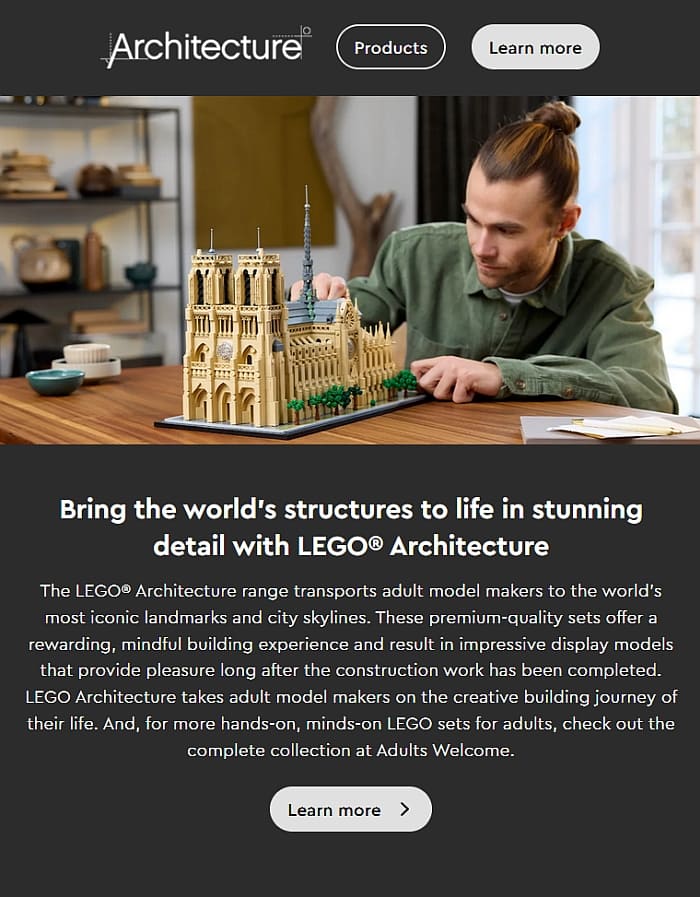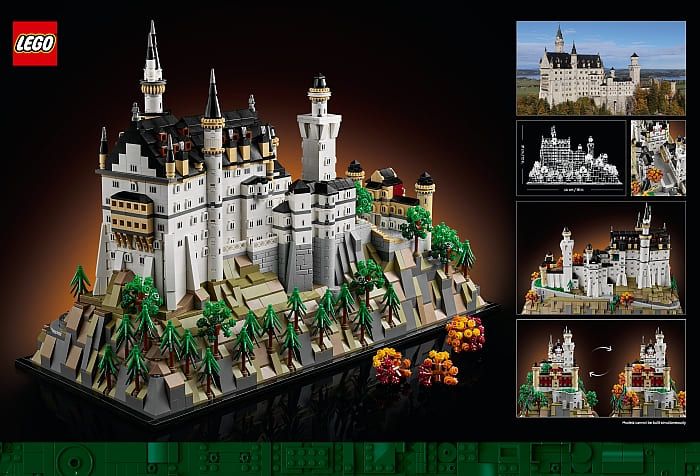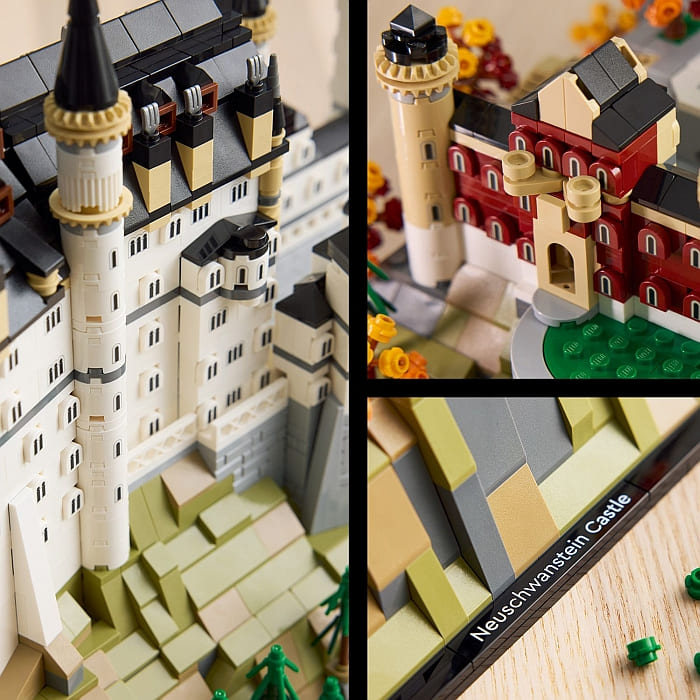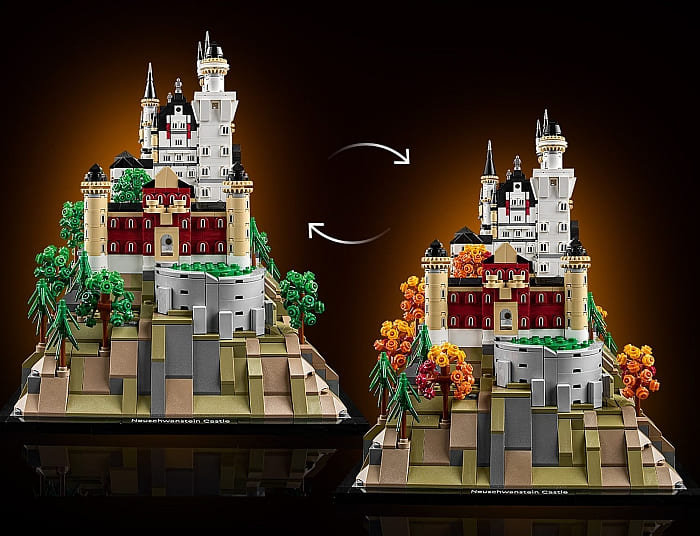The past couple of days, LEGO revealed several LEGO Star Wars sets that will be released soon. And a couple of them are already available for pre-order. Details below.

#75413 LEGO STAR WARS REPUBLIC JUGGERNAUT: This impressive 10-wheeler is steered by simply tilting the model as you move it, and it has easy access to the detailed interior. The set includes 5 minifigures: Ki-Adi-Mundi with a Lightsaber, Commander Bacara, and 3 Galactic Marines, each with blasters, plus 3 Battle Droid LEGO figures with blasters. Place the minifigures in the front and rear cockpits, the main compartment (which has seating and weapon racks), on the elevating observation post, and in the rear turret with a stud-shooter. Contains 813 pieces. Price: $159.99 – Available in August at the LEGO Star Wars section of the Online LEGO Shop.

#75414 LEGO STAR WARS THE FORCE BURNER SNOWSPEEDER: The set recreates authentic features of the unique snowspeeder vehicle seen in LEGO Star Wars: Rebuild the Galaxy Season 2. It’s got eye-catching flame decals, an opening double cockpit with a hidden, detachable speeder bike, and a rear stud-shooter. Press down on the seat in the back of the cockpit (or the head of the minifigure sitting in it) to release the speeder bike. The set also includes the first-ever minifigures of Sig Greebling, Darth Dev, and Solitus. Each character is equipped with a Lightsaber, including Solitus’s dual Lightsaber with a chain, plus Solitus also has a cool STAP for battle play. Contains 349 pieces. Price: $54.99 – Available in August at the LEGO Star Wars section of the Online LEGO Shop.

#75417 LEGO STAR WARS AT-ST WALKER: This model captures many authentic features of the All Terrain Scout Transport vehicle, from its distinctive legs to the top hatch, which opens to reveal the highly detailed 2-person cockpit. Customize your display by rotating the ‘head’ of the AT-ST, opening and closing the shutters over the viewports, and adjusting the laser cannons. The vehicle comes with an information plaque and a unique minifigure of an AT-ST Driver (with the Imperial crest printed on its arms). Contains 1513 pieces. Price: $199.99 – Pre-order now at the LEGO Star Wars section of the Online LEGO Shop.

#75418 LEGO STAR WARS ADVENT CALENDAR 2025: Look out for BB-8 in snowman outfit, a Jawa, Mouse Droid, and Medical Droid in holiday outfits, plus lots of other droids. Also included are droidsmith Babu Frik and connectible mini builds to create his workshop, plus a connectible Jawa buildable vehicle and crane, a box of extra droid parts, and a Christmas tree, of course. With a surprise treat every day, this buildable toy playset offers hours of engaging, creative activities for kids and all the family to enjoy in the run-up to Christmas. Contains 263 pieces. Price: $44.99 – Available in September at the LEGO Star Wars section of the Online LEGO Shop.

#75430 LEGO STAR WARS WICKET THE EWOK: This brick-built figure is full of authentic details and comes with a buildable spear and a treat (like the treat Princess Leia gave him in an Endor forest). Also includes a Wicket the Ewok minifigure, plus an information plaque to complete an adorable display piece. Contains 1010 pieces. Price: $129.99 – Pre-order now at the LEGO Star Wars section of the Online LEGO Shop.

#75431 LEGO STAR WARS 327TH STAR CORPS CLONE TROOPERS BATTLE PACK: Build a platoon of 327th Star Corps Clone Troopers and take on the Super Battle Droids! The set features 4 minifigures of Clone Troopers in their iconic 327th Star Corps outfits and 3 Super Battle Droids. Also included are an AT-RT walker with a minifigure cockpit, a stud-shooter and storage for a blaster and binoculars, and a stud-shooter turret for Clone Troopers, while the Super Battle Droids have a Spider Droid to inspire epic battles. Contains 258 pieces. Price: $44.99 – Available in August at the LEGO Star Wars section of the Online LEGO Shop.

#75432 LEGO STAR WARS V-19 TORRENT STARFIGHTER: Team up with hero character General Obi-Wan Kenobi against Asajj Ventress, and swoosh into LEGO Star Wars: The Clone Wars action! The starfighter features 2 stud-shooters and adjustable wings for flight and landing modes. The central wing can also be used as a handle for ‘flying’. The three minifigures are Asajj Ventress with 2 red Lightsabers with special curved hilts and General Obi-Wan Kenobi with a blue Lightsaber for action-packed duels. Contains 567 pieces. Price: $64.99 – Available in August at the LEGO Star Wars section of the Online LEGO Shop.

#75433 LEGO STAR WARS JANGO FETT’S STARSHIP: The starship features a cockpit for 2 minifigures, 4 stud-shooters, a seismic charge-dropping function, and wings that rotate with gravity. The minifigures are Jango Fett with 2 blaster pistols and a jetpack, Young Boba Fett, and Lama Su. There is also a service cart that can be used to move the starship. Contains 707 pieces. Price: $69.99 – Available in August at the LEGO Star Wars section of the Online LEGO Shop.

#75434 LEGO STAR WARS K-2SO SECURITY DROID: Showcase K-2SO on the stand and pose the brick-built droid’s head and arms to change up the display. Contains 845 pieces. Price: $89.99 – Available in August at the LEGO Star Wars section of the Online LEGO Shop.

#75435 LEGO STAR WARS BATTLE OF FELUCIA SEPARATIST MTT: This buildable Star Wars vehicle has lots of authentic details, including a droid deployment rack that pushes out through the front hatch at the turn of a knob. The MTT also has fold-up side panels for easy access to the detailed interior, a pilot cockpit, a STAP speeder stowed in the rear compartment, 2 stud-shooters and hidden wheels for smooth movement across flat surfaces. The two minifigures are Aayla Secura with a Lightsaber and Commander Bly with a blaster rifle. Also included are 3 Commando Droids and 6 Battle Droids, all with blasters, and a Pilot Battle Droid. Contains 976 pieces. Price: $159.99 – Available in August at the LEGO Star Wars section of the Online LEGO Shop.

What do you think? Are you excited for any of the upcoming LEGO Star Wars sets? Feel free to share your thoughts and discuss in the comment section below!

And you might also like to check out the following related posts:




















